Discover the Top SEO Services in Australia with Vanator Assist, scaling brands in 2025 through data-driven strategies, technical SEO, local optimization, and transparent ROI reporting for sustainable growth
- Vanator Assist
- Blogs
- Top SEO Services in Australia: The 2025 Guide to Growth, ROI, and Visibility
Top SEO Services in Australia: The 2025 Guide to Growth, ROI, and Visibility
Discover the Top SEO Services in Australia with Vanator Assist, scaling brands in 2025 through data-driven strategies, technical SEO, local optimization, and transparent ROI reporting for sustainable growth
Introduction

Search is the backbone of digital growth in Australia, and choosing the right SEO services can determine whether a brand thrives or gets lost in the noise. This guide covers the top SEO services Australian businesses need in 2025, the metrics that matter, pricing insights, the market outlook, and how to evaluate an agency for sustainable results. It also includes example growth charts and visual frameworks to help plan and forecast SEO investment and performance.
SEO is essential for Australian businesses because it improves visibility, drives targeted traffic, builds trust, and offers a budget-friendly path to growth.
Key Takeaways:
The Top SEO Services Australian Businesses Need
What Australian Businesses Are Spending on SEO
Visual Framework: The SEO Growth Flywheel
The Australian SEO Market Outlook (2025–2030)
How to Choose a Top SEO Agency in Australia
Leading Benchmarks and Directories to Explore
Growth Scenarios and Forecasting
Case-Style Outcomes to Aim For
What “Good” Looks Like in Reporting
Visuals You Can Use Internally
Where to Find and Compare Top SEO Providers

Why SEO Matters in Australia
- Google commands the vast majority of search behavior in Australia, with a market share near 94%, making SEO on Google the top priority for organic visibility.
- Digital marketing spend continues to expand, with search (SEO) among the fastest-growing channels through 2034 in Australia.
- The SEO software ecosystem is scaling rapidly, signaling increased investment in measurement, automation, and optimization across businesses of all sizes.
The Top SEO Services Australian Businesses Need
These are the core services that deliver measurable impact when executed together in an integrated strategy.

1) Technical SEO Audits and Fixes
- Crawlability, indexing, and site health are foundational to rankings and organic traffic growth in Australia’s Google-dominant market.
- Adopting SEO software and tools to diagnose technical issues is expanding quickly, with the Australian SEO software market projected to grow from $2.1B in 2024 to $5.2B by 2030.
What to include:
- Site speed and Core Web Vitals
- Mobile-first readiness
- Indexation, sitemaps, and robots.txt
- Canonicals and duplicate prevention
- Structured data and schema coverage
Internal linking and crawl depth optimization
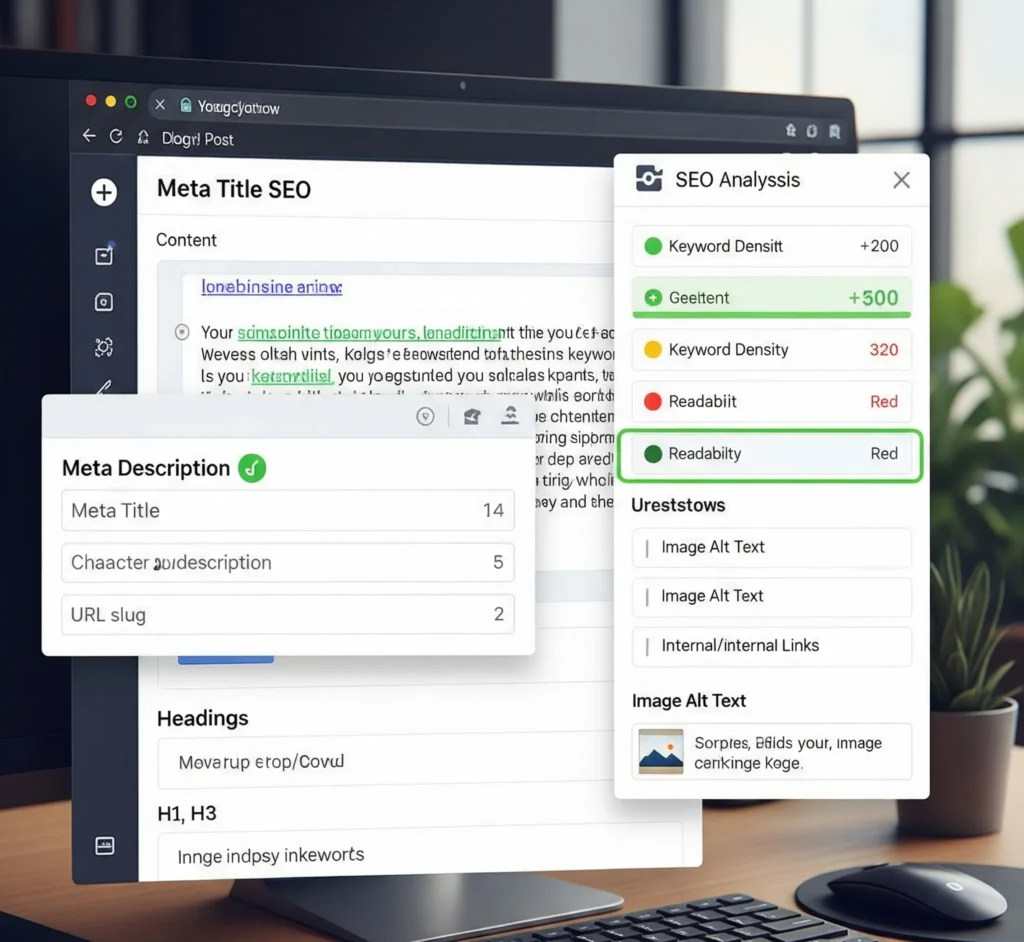
2) On-Page SEO and Content Optimization
- Optimizing title tags, headers, internal linking, and content structure aligned to intent is critical for ranking and engagement on Google in Australia.
- Content built on high-intent keywords with localized relevance (suburb, city, state) improves both rankings and conversions.
What to include:
- Keyword research mapped to funnel stages
- Content briefs and topic clusters
- E-E-A-T-aligned content (experience, expertise, authority, trust)
- Conversion-focused on-page design
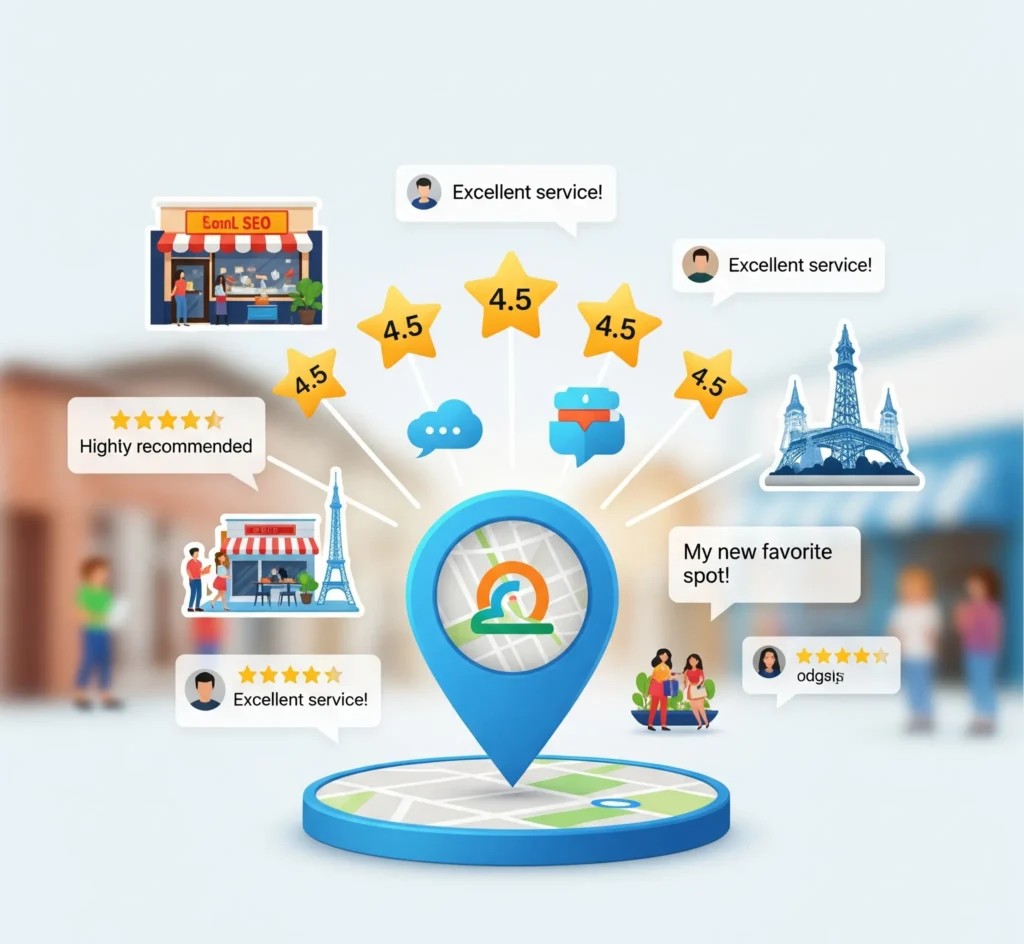
3) Local SEO for Multi-Location and Service-Area Businesses
- Local SEO helps businesses win discovery in maps and local packs, especially in high-competition markets like Sydney, Melbourne, Brisbane, and Perth.
- Local SEO spend is a key subsegment within overall digital marketing growth in Australia through 2034.
What to include:
- Google Business Profile optimization
- NAP consistency and local citations
- Localized landing pages
- Review generation and response systems

4) Link Building and Digital PR
- Authority building via quality backlinks remains a core ranking driver, particularly in competitive categories and capital-city markets.
- Sustainable results come from white-hat tactics and PR-worthy content, supported by rising software capabilities in Australia’s SEO stack.
What to include:
- Digital PR campaigns
- Resource link building and unlinked mentions
- Thought leadership and data-driven content assets

5) E‑commerce SEO
- Product discovery and category-level ranking improvements are essential for online retail growth in Australia’s maturing digital economy.
- Shopify, WooCommerce, and Magento sites benefit from structured data, faceted navigation management, and crawl budget optimization.
What to include:
- Structured data (Product, Review, Breadcrumb)
- Category taxonomy and internal linking
- Image SEO and feed health
Pagination and filters management
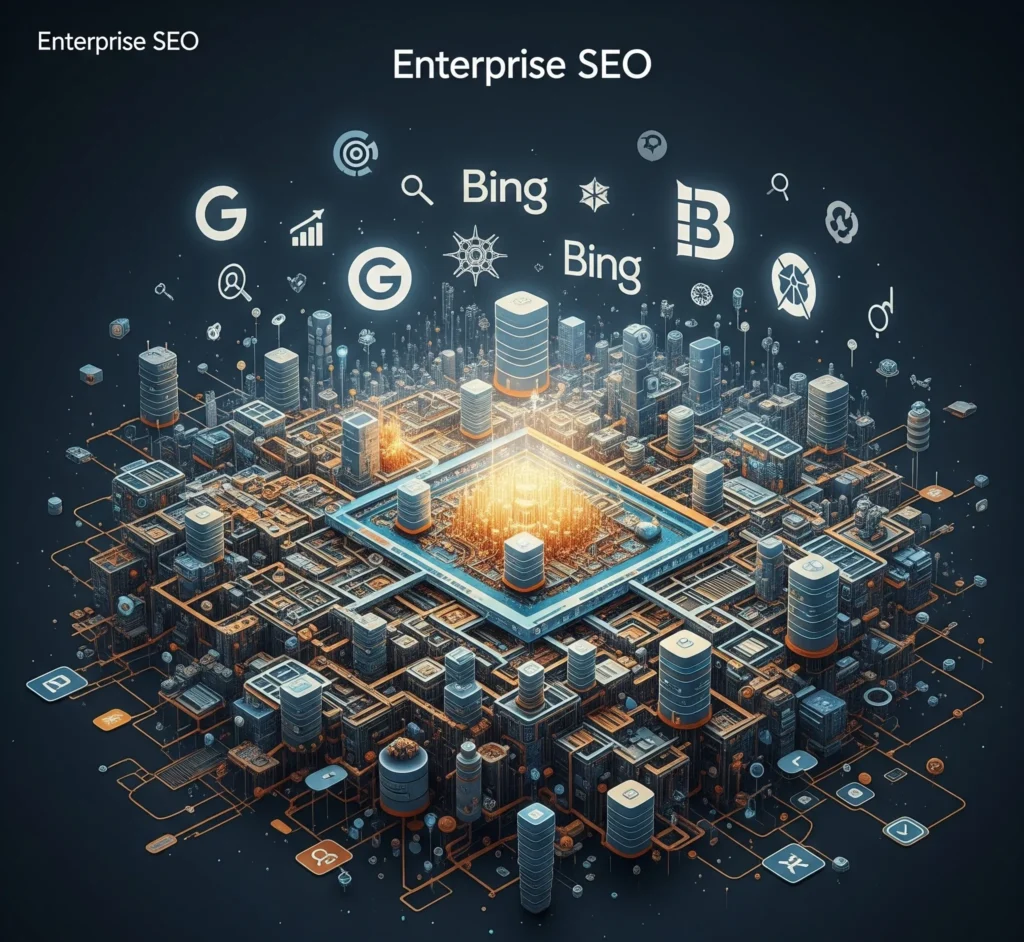
6) Enterprise and Multi-Brand SEO
- Large Australian enterprises utilize advanced SEO software, governance models, and integrated analytics to coordinate efforts at scale—an area leading market revenue today.
- SMEs, however, are the fastest-growing segment for SEO software adoption, signaling broader uptake of professional SEO operations.
What to include:
- Governance and workflows with dev/content teams
- Internationalization (hreflang) where relevant
- Stakeholder reporting and ROI modeling
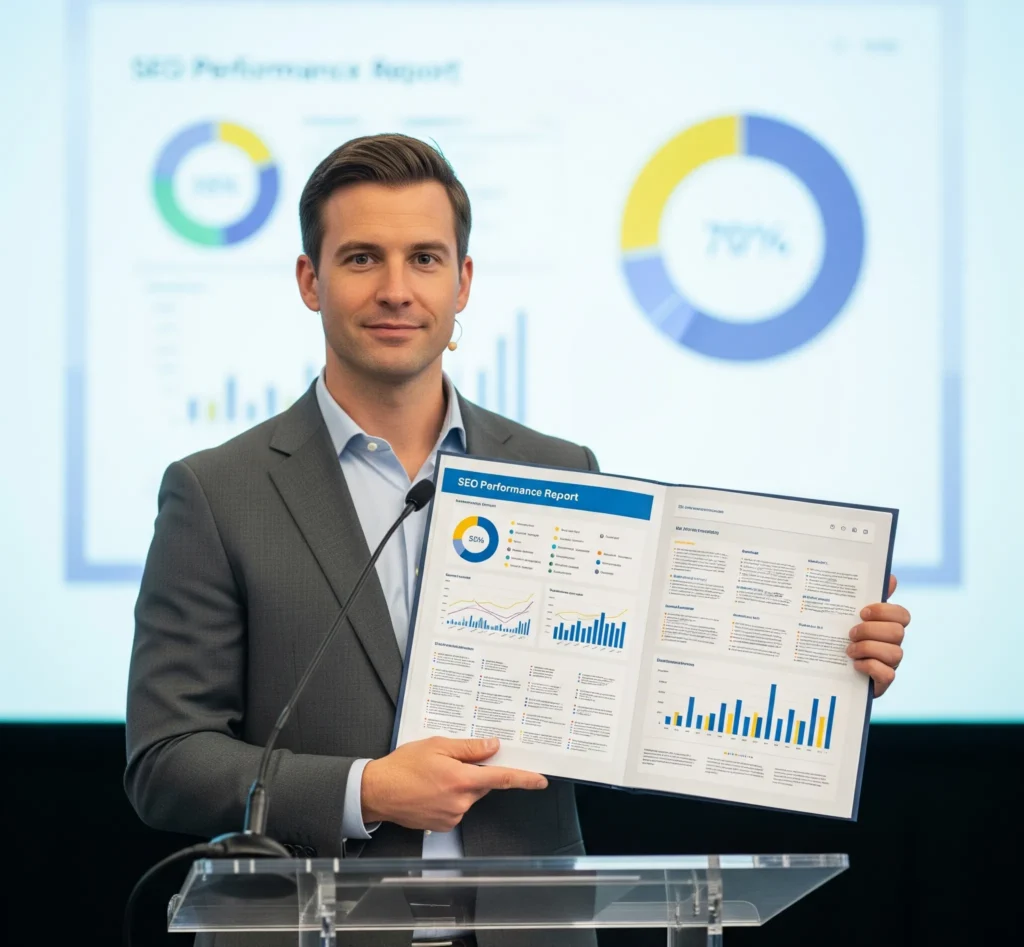
7) Analytics, Reporting, and Forecasting
- Businesses increasingly expect transparent, ROI-focused reporting: traffic, rankings, conversions, pipeline, and revenue attribution.
- Forecasting tied to market growth assumptions helps budget planning and executive buy-in.
What to include:
- GA4 + GSC integrated dashboards
- KPI ladders (visibility → traffic → MQL/SQL → revenue)
- Attribution models and cohort tracking
What Australian Businesses Are Spending on SEO

- Digital marketing spend in Australia reached $13.03B in 2024, with SEO among the fastest-growing channels through 2034, projected at a 7.8% CAGR within digital marketing.
- The SEO software segment alone is forecast to reach $5.2B by 2030 in Australia, reflecting deeper investment in tools and measurement across enterprises and SMEs.
How to use this:
- Expect competitive pressure and rising costs in mature niches.
- Budget not just for retainers, but for data, content, and link assets to sustain growth.
Visual Framework: The SEO Growth Flywheel

- Technical foundation → content and on-page → authority building → local presence → measurement and refinement → compounding gains over time.
- Software-supported workflows reduce friction, accelerate insights, and support scale.

- Google’s dominant share of search means businesses must focus on Google-first SEO while tracking Bing’s modest but growing contribution in certain demographics and corporate environments.
- The SEO software market growth at 16.8% CAGR reflects increasing sophistication in strategy, automation, and analytics across Australian businesses.
- Overall digital marketing investment is expanding steadily through 2034, with SEO a durable, compounding channel for efficient growth.
How to Choose a Top SEO Agency in Australia

- Verify results orientation: rankings, traffic, leads, and sales—not vanity metrics.
- Prioritize agencies with local market understanding for Sydney, Melbourne, Brisbane, Adelaide, Perth, and regional hubs.
- Ensure transparent reporting and KPI alignment, including GA4/GSC dashboards and lead/revenue attribution.
- Check category-specific expertise (e‑commerce, SaaS, local services, enterprise).
- Review standing in independent directories and marketplaces for social proof and comparative benchmarking.
Leading Benchmarks and Directories to Explore

- Independent rankings and client reviews provide a snapshot of Australia’s competitive SEO landscape in 2025.
- Sector-specific lists for e‑commerce SEO can help retailers match agency strengths to platform and growth stage.
Example Metrics to Track Monthly
- Visibility: impressions, keyword coverage, top-3/top-10 positions.
- Engagement: CTR, bounce rate, time on page, scroll depth.
- Conversions: organic leads/sales, assisted conversions, conversion rate.
- Revenue: pipeline influenced, LTV/CAC trends, ROI.
- Technical health: Core Web Vitals pass rate, index coverage, crawl errors.
Growth Scenarios and Forecasting

Below are illustrative scenario frameworks businesses use alongside market data trends to guide decision-making. Replace with real performance data before plotting.
- Conservative: Prioritize technical fixes and high-ROI pages; expect gradual gains as authority builds over 6–12 months aligned with steady digital investment growth in Australia.
- Balanced: Combine content velocity, technical optimization, and targeted PR; track compounding growth aligned with the rise in SEO software adoption and analytics sophistication.
- Aggressive: Multi-market expansion, category leadership, and digital PR cadence; aligns with enterprise-scale adoption and competitive verticals.
Pricing and Engagement Models

- Retainers for ongoing SEO management are common, often paired with project-based sprints for migrations, replatforming, or content expansion.
- SMEs represent the fastest-growing adoption group for SEO tooling, suggesting rising demand for affordable, transparent packages.
- Pricing varies by city and competition level; independent directories provide ranges and client reviews for benchmarking.
Case-Style Outcomes to Aim For
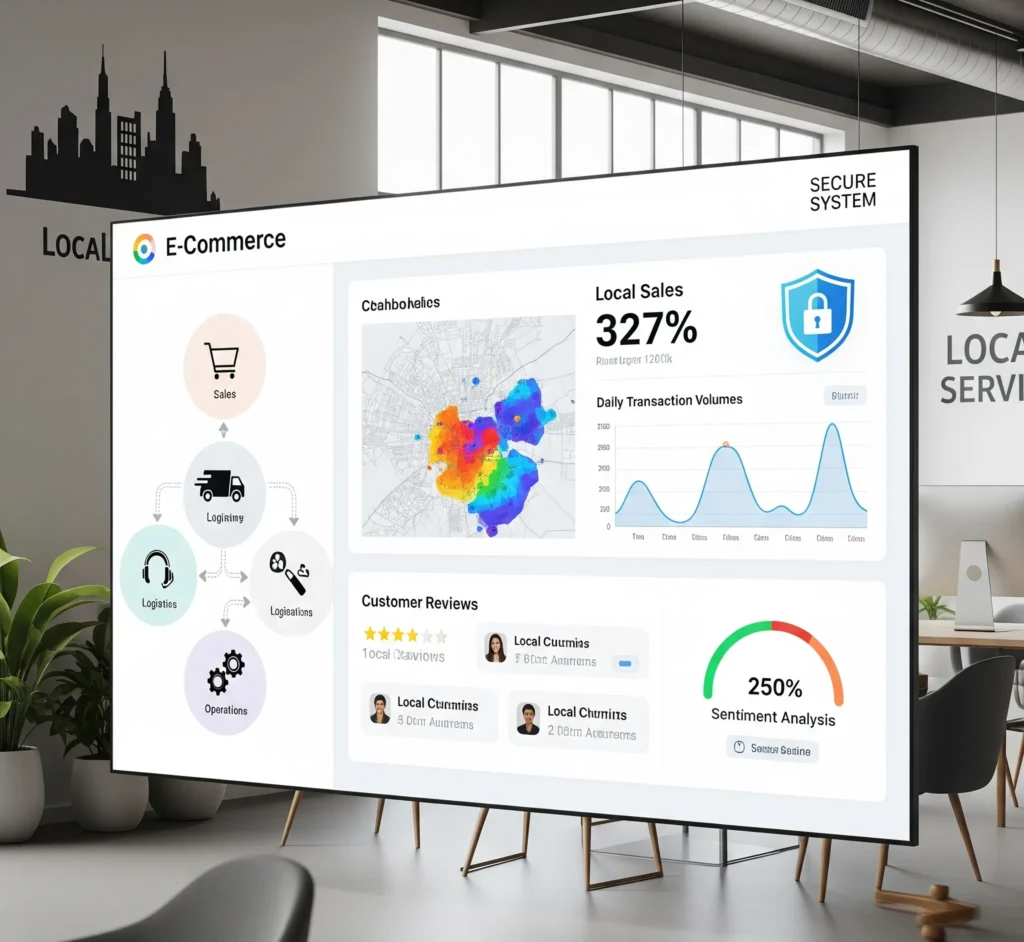
- Local service brand: Improve GBP visibility, local links, and suburb pages → 3–6 months to top-3 map pack in primary suburbs → increased inbound calls and bookings.
- E‑commerce store: Structured data, category architecture, and content briefs → 6–9 months to category page growth → incremental revenue and improved ROAS for blended search strategy.
- Enterprise: Governance, cross-functional workflows, and executive-level reporting → 12-month roadmap to defend rankings and expand into adjacent categories.
What “Good” Looks Like in Reporting
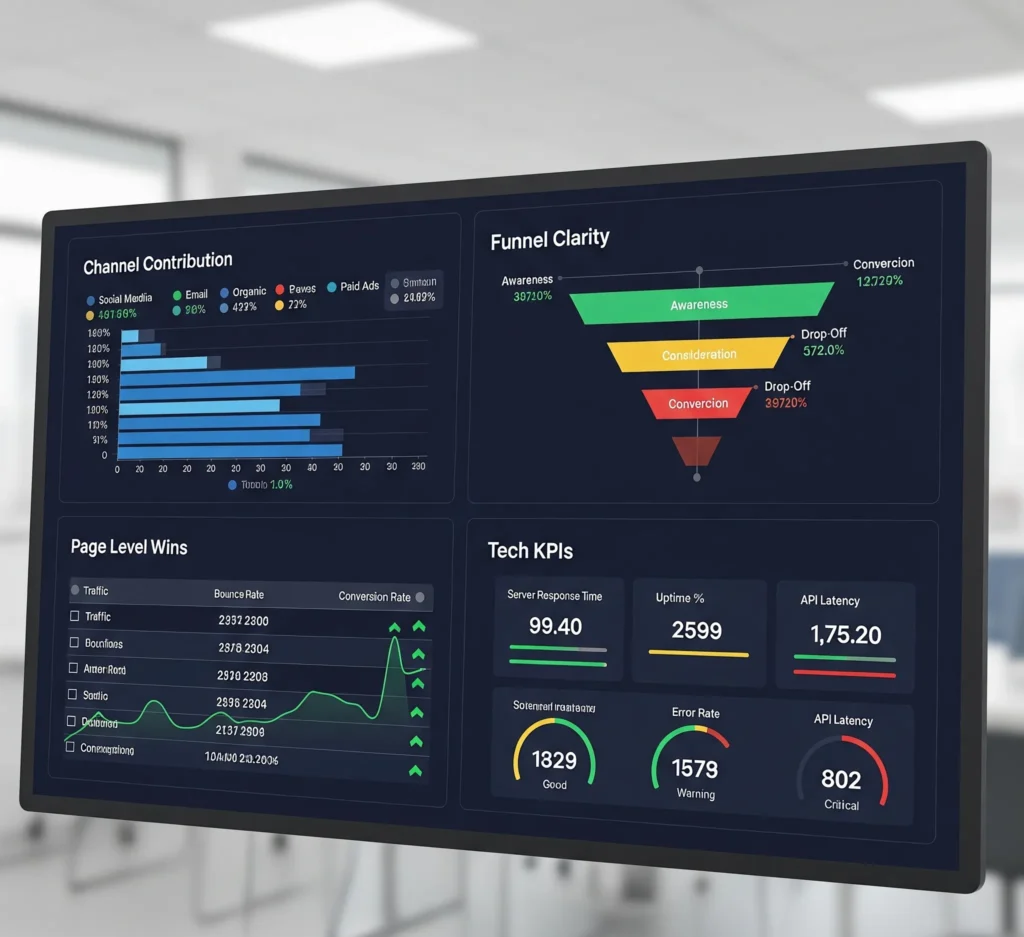
- Channel contribution: Organic vs paid vs direct trendlines with seasonality adjustments.
- Funnel clarity: Sessions → engaged sessions → MQL → SQL → revenue with assisted conversion views.
- Page-level wins: Top landing pages by growth and revenue contribution; content cohort performance.
- Tech KPIs: CWV pass rate improvements, index coverage, crawl efficiency gains.
Visuals You Can Use Internally
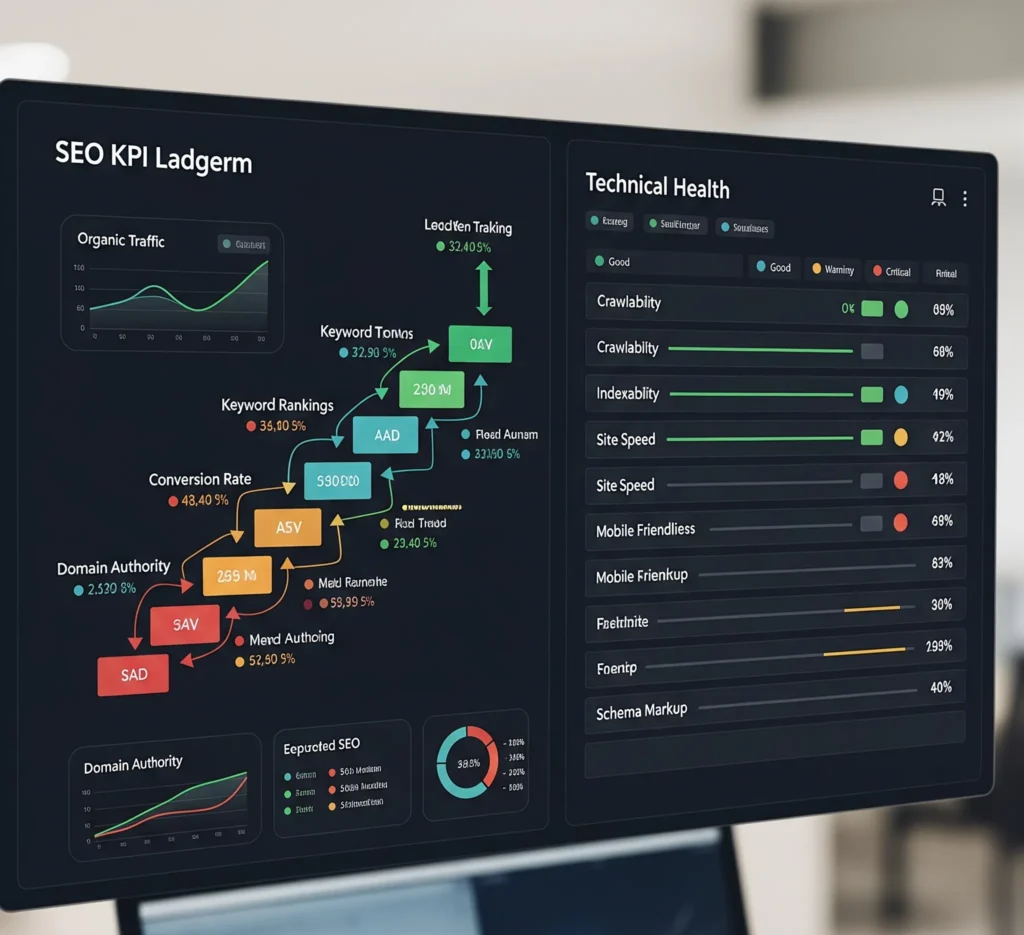
Use these as templates to communicate strategy and progress to stakeholders. Replace placeholder metrics with actual data before presentation.
- SEO KPI Ladder Diagram: Visibility → Traffic → Conversions → Revenue.
- Technical Health Scorecard: CWV pass rate, index coverage, critical errors resolved.
- Local Pack Coverage Map: % of target suburbs with top-3 placement.
- Category Growth Chart: Top categories by organic revenue growth over time.
- Investment vs Outcome Curve: Monthly SEO investment vs cumulative organic revenue influenced.
Where to Find and Compare Top SEO Providers

- National rankings and reviews across Australia help shortlist agencies by expertise, price point, and client feedback.
- E‑commerce-specific roundups for 2025 can help retail brands find platform-aligned partners.
Final Checklist Before Hiring
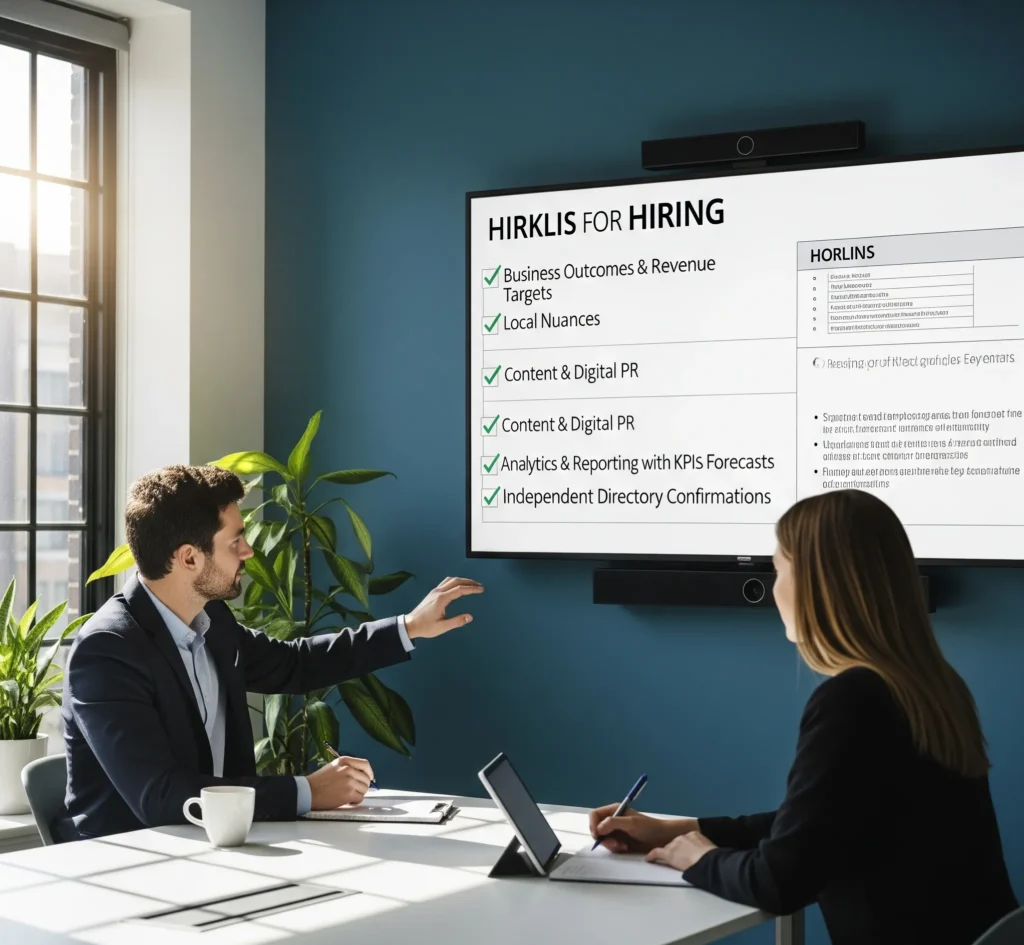
- Does the proposal map to business outcomes and revenue targets, not just rankings?
- Are local nuances (city/suburb intent, competition, seasonality) built into the plan?
- Are content and digital PR included for authority, not just technical and on-page?
- Is there a clear analytics and reporting cadence with defined KPIs and forecasts?
- Do independent directories confirm experience in the needed category and size tier?
Conclusion
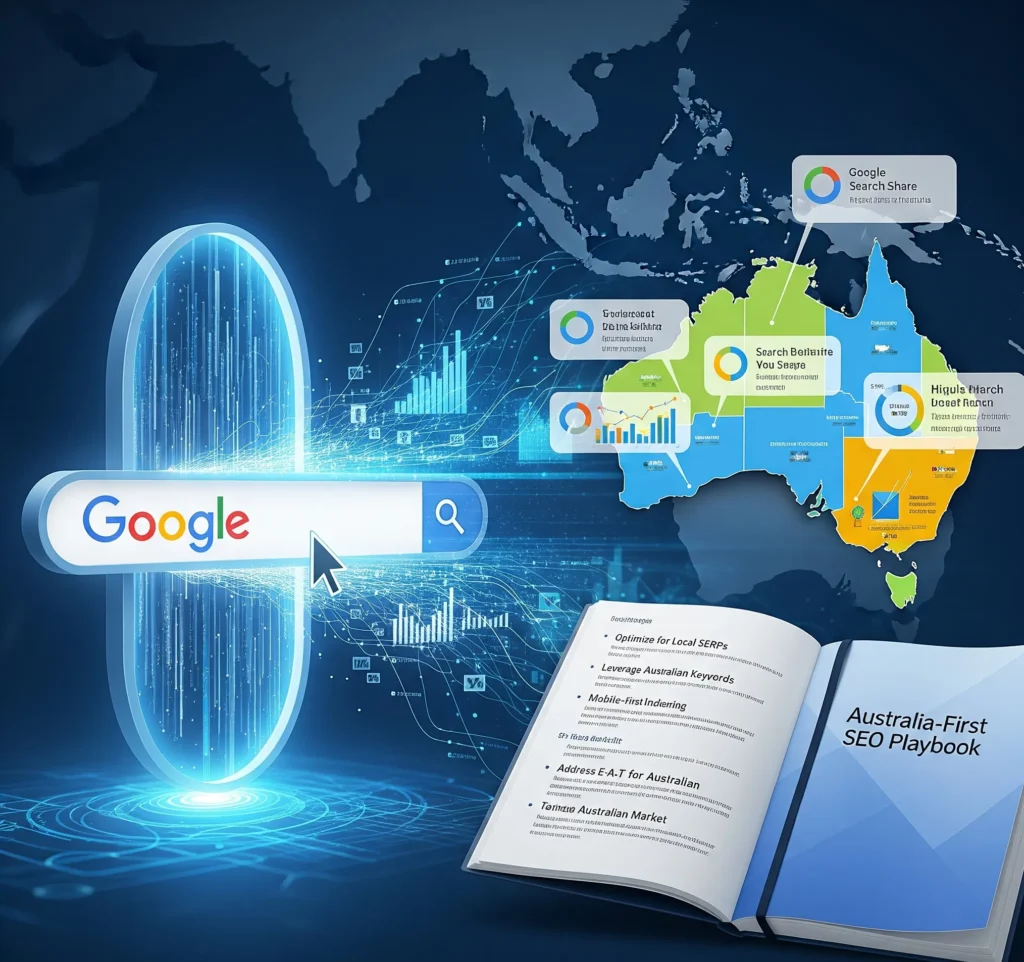
Australia’s SEO landscape in 2025 is sophisticated, competitive, and data-driven, with Google dominating discovery, SEO software adoption accelerating, and digital marketing spend rising steadily through 2034. The top-performing SEO programs integrate technical excellence, localized content strategy, authority building, and transparent ROI reporting. Businesses that approach SEO as a compounding, measurable growth engine—supported by the right partners and platforms—will capture durable market share and superior unit economics in the years ahead.
Citations:
- The referenced page emphasizes SEO’s necessity for Australian businesses to win visibility, targeted traffic, competitive advantage, and trust with budget-friendly strategies.
- Google’s search share and market behavior inform the Australia-first SEO playbook.
- The Australian SEO software market’s projected growth demonstrates rising sophistication and investment in SEO operations.
- Digital marketing market forecasts highlight SEO’s role as a fast-growing, ROI-centric channel through 2034.
- Independent directories and rankings provide up-to-date market visibility on top agencies and services in Australia.
- E‑commerce SEO leaders and workflows inform best practices for retailers scaling organic revenue in Australia.
- Agency selection guidance underscores results orientation and local expertise for Sydney and beyond.
- Transparent reporting and KPI frameworks remain central to modern SEO engagements.
Some top free AI tools for launching a Tech Startup in 2025 include:
• ChatGPT (Free tier) – for content generation, coding help, and idea validation.
• Notion AI – for automating note-taking, task planning, and documentation.
• Durable – builds a website in 30 seconds using AI.
• Pictory – turns scripts/blogs into videos (limited free plan).
• Zapier AI – automates workflows without coding.
Yes. You can use:
• Bubble.io (Free tier) – to build web apps with no-code.
• ChatGPT or Claude.ai – to assist with code snippets and logic.
• Figma + AI plugins – for UI/UX prototyping.
• Trello + AI assistants – for managing agile development.
Try these:
• ChatGPT – Ask it to summarize market trends or analyze a niche.
• SimilarWeb (Free version) – provides traffic sources and insights.
• Google Trends – tracks interest over time.
• Perplexity AI – fetches data-backed research answers from the web.
• Looka (Free preview) – generates logos and brand kits.
• Canva AI tools – design presentations, logos, and posts.
• NameLix – AI business name generator.
• Copy.ai – for taglines, social captions, and pitch ideas.
Yes:
• GitHub Copilot (Free for students/verified open source)
• Replit Ghostwriter (Free tier) – AI for collaborative coding.
• Codeium – free AI-powered coding autocomplete.
• Google Colab – run Python code and ML models in the cloud for free.
Absolutely. Tools like:
• Beautiful.ai (Free plan) – creates visual pitch decks.
• Upmetrics (Free templates) – for startup business plans.
• Tome AI – for storytelling pitch presentations.
• ChatGPT or Notion AI – to generate and refine the content.
• Integration: Ensure compatibility with existing systems (e.g., CRM, ERP).
• Scalability: Tools like Workday Peakon grow with your business.
• Cost: Compare ROI—e.g., UiPath saves 200+ hours monthly for some firms.
• User-Friendliness: Opt for platforms with intuitive interfaces, like Tableau Pulse.
Yes:
• Tidio (Free chatbot plan) – for small teams.
• ManyChat (Free for Facebook/Instagram DM bots)
• Botpress – open-source conversational AI platform.
• Chatbase – turns your data (e.g., FAQ docs) into a chatbot.
Use:
• ChatGPT or Gemini – for blogs, captions, and scripts.
• Pictory or Lumen5 – turn blogs into videos.
• Canva AI – for visuals and post templates.
• Hootsuite (Free plan) – schedule and manage posts with AI suggestions.
Yes. Most tools offer freemium models:
• Start free with limited features.
• Upgrade only as you scale (e.g., more users, higher volume).
• Many integrate well with paid tools or offer API access for advanced users.
Connect with Us
Feel free to drop us a line – we’re here to hear from you and help you in the best possible way

